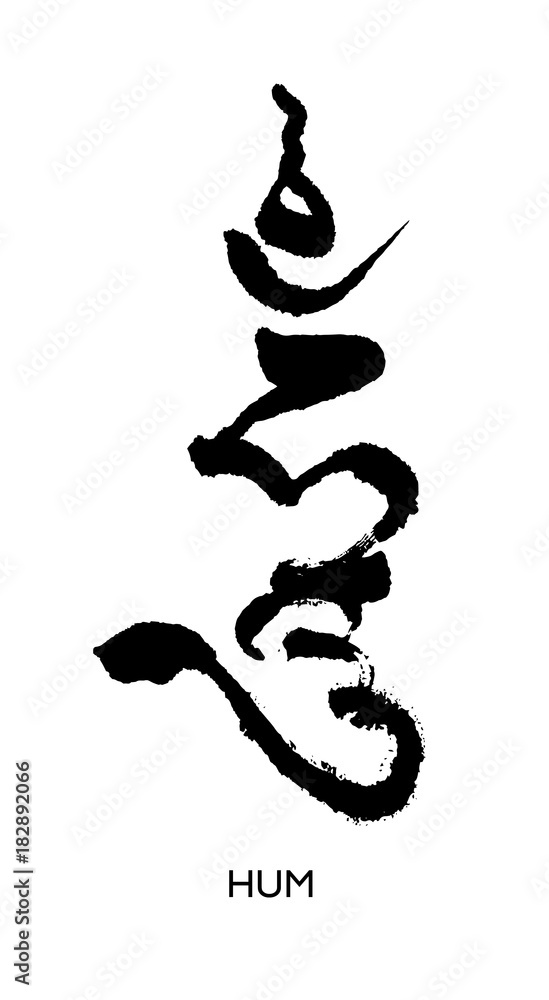The above two symbols, the tetrahedron and the solar cross, are both sacred images based on the number four--the Tetrad--associated with the Earth, or Gaia, and symbolizing manifest stability and totality; hence we have the four seasons; the four classical elements (Earth, Air, Fire, Water) which are also the four basic requirements for life; the four limbs of vertebrates; the four corners of most buildings; and the four dimensions of space-time (length,width, depth, and time).
In Buddhism, the number four also has many foundational uses, including the Four Noble Truths, the Four Brahmaviharas ("Abodes of God" or adaptive mental attitudes), the fourfold mantra (Om Mani Padme Hum) representing the totality of the Dharma. For today's Dharma Talk, I would like to map these Buddhist tetrads onto one another, and onto my favorite mantra, or core injunctions of meditation (Breathe, Observe, Let Go, Abide) in order to investigate the insights that arise from this superposition. The correlations are as follows:
OM--Breathe--First Noble Truth (Suffering)--Benevolence
MANI--Observe--Second Noble Truth (The Causes of Suffering)--Compassion
PADME--Let Go--the Third Noble Truth (Realization or liberation)--Sympathetic Joy
HUM--Abide--the Fourth Noble Truth (The Path of awakening)--Equanimity.
OM, the seed syllable of the Cosmos.
Om (sometimes rendered "AUM") is the sacred seed syllable in all Dharmic religions--Hindu, Buddhist, and all others. It is often described as both the name and the voice of God, or the Sacred itself, and reciting it with full attention is said to achieve ineffable communion with the Divine--with all that is. Therefore, it can aptly be correlated with the first injunction: BREATHE, since "breath" and "spirit" share the same root meaning (Latin spiritu from spiro, spirare--to breathe) and are synonyms in most other languages (e.g. ruach (Hebrew), prana (Sanskrit), and Qi (Chinese) or Ki (Japanese).
Hence, both OM and BREATHE correlate with the first of the Brahmaviharas, Maitri (Pali Metta), whose meanings combine gratitude and benevolence--the default attitude we should take toward everyone and every other living being when we encounter them, and more deeply, gratitude for the sacred miracle of life itself, as we take each breath.
MANI, the Sanskrit word for the Jewel of Karuna or compassion.
Whereas Maitri is the default attitude we should cultivate toward everyone, Karuna or compassion is the attitude we assume toward all who suffer. It is not, simply "pity," however. It refers to active identification with all who suffer (including ourselves), coupled with an authentic determination to help alleviate their suffering in any ways we can. Hence it is correlated with the second injunction, OBSERVE, to look deeply into the suffering of ourselves and all other beings.
Padme, the Lotus of full awakening.
Padma (or Padme) refers to the Lotus--a sacred symbol throughout the Far East--as a symbol of full awakening or enlightenment--rising pristine above the muck, like a magnificent flower in a wetland. Hence it is correlated with the third injunction--LET GO, or to free oneself from all afflictive attachments, all "wishing things were other than they are."
HUM, the "Peace that passeth all understanding."
The Fourth seed syllable wraps up all the others, and hence symbolizes the fourth Brahmavihara: Equanimity. It also can be correlated with the Fourth Noble Truth--the Path of Awakening, which the Buddha outlined, in his inaugural Sermon at Benares, as the Eightfold Path: Right Understanding, Right Aspiration, Right Speech, Right Action, Right Livelihood, Right Effort, Right Mindfulness, and Right Concentration. And it can be invoked nicely by the injunction "Abide."
There are many meditative practices that can be derived from this superposition of Buddhist tetrads. For example, one could start by inwardly reciting, on four consecutive breaths, the following mantras or injunctions in any sequence you wish:
1. Breathe with gratitude, Observe with compassion, Let Go with selfless joy, Abide in equanimity;
2. Suffering, the Roots of Suffering, the Release from Suffering, the Path of Cultivation;
3. Benevolence, Compassion, Joy, Equanimity
4. Om Mani Padme Hum
Improvise as you wish, but also remember that Mantras are simply training wheels, which you can let go of when you no longer need them...







No comments:
Post a Comment